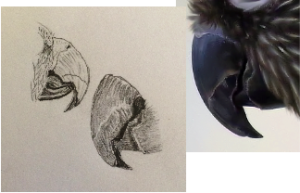Do it by hand.
We should not use our minds to collect information like computers. The gathering of knowledge and the effort to understand it is conducted by piecing together similarities and differences of interchangeable and disparate objects. Classic and modern tools exist to complete this activity are available from the physicality of handwritten notes and sketching to the universality of digitally typed notes and captured photographic images. Without inclusion of the archival benefits or a cost analysis of these different methods, the physical collection of details yields increased knowledge and understanding by requiring greater use of the mind throughout the entire process.
Mueller and Oppenheimer (2014) found across three studies that those who took notes using laptops tended to transcribe verbatim the information presented in lectures. While those who took notes on the computer collected more information than those who took handwritten (or, longhand) notes, those who took handwritten notes processed the information and reframed the information as they were listening to the lecture. The authors concluded that the use of a laptop to record notes was “detrimental” to learning.
Our eyes are engaged throughout the activity of sketching (Wollheim, 2005), while our eyes are only used at the start of the activity of photography. Our involvement in the capture of a photographic image ends after we press the camera shutter button. Wollheim (2005) provides that the process of drawing requires continual focus on the movement of the drawing tool and consistent evaluation of the marks made on the paper. We highlight this distinction in the common language of these two art forms – we take a photograph while we make a drawing.
Strategies to promote active learning include activities that involve learners in doing things and thinking about what they are doing (Bonwell & Eison, 1991). The taking of handwritten notes involves greater cognitive processing than the recording of notes on a computer. In contrast to the taking of an photograph, taking notes by hand involves the notetaker in the entire process of information collection in the manner that the drawing of something requires consistent evaluation. Similar to photography, we are only recording notes when we use a computer for note taking.
Computers should be used to store, retrieve and present our thoughts and ideas, We should use our minds to make connections between thoughts and ideas.
 |
References:
Bonwell, C., & Eison, J. (1991). Active learning: Creating excitement in the classroom AEHE-ERIC higher education report No. 1.
Mueller, P. A., & Oppenheimer, D. M. (2014). The pen is mightier than the keyboard advantages of longhand over laptop note taking. Psychological science, 25(6), 1159-1168. doi: 10.1177/0956797614524581
Wollheim, R. (2005). Why is drawing interesting?. The British Journal of Aesthetics, 45(1), 1-10. doi: 10.1093/bjaesthetics/ayi001